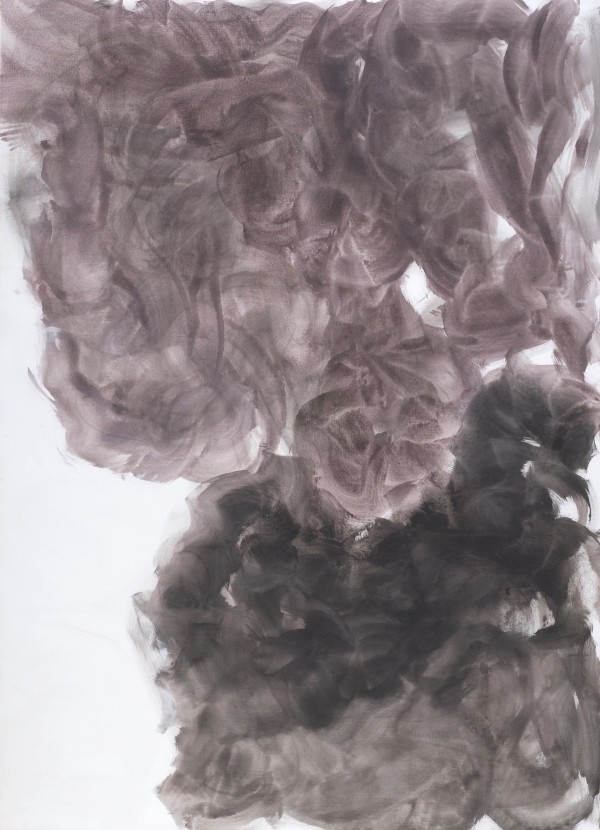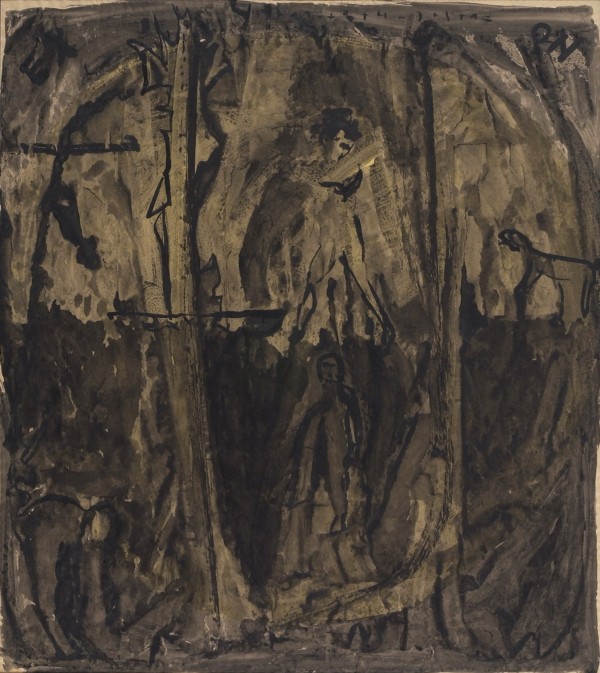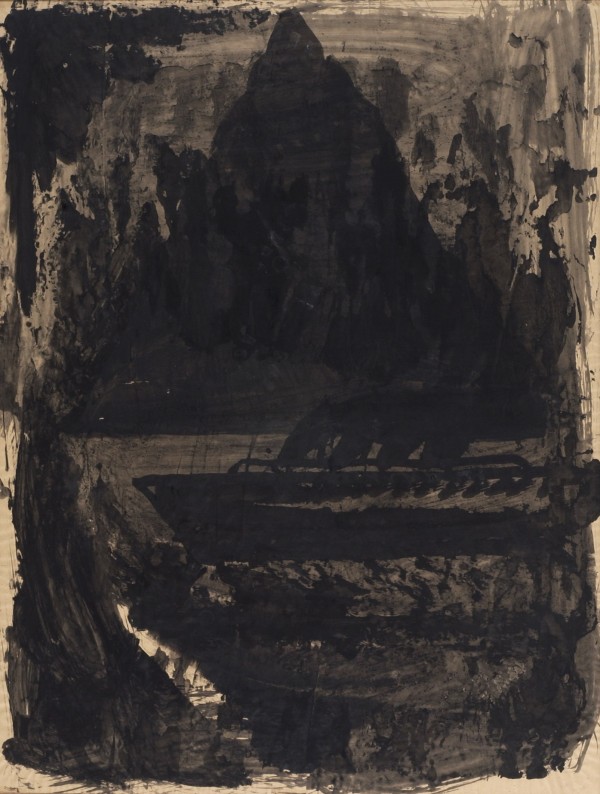How are the recurring Yes!es and No!s in Steidl’s work to be explained? The one within the other, the one opposed to the other? Is it possible to explain how what is most fully instantiated appears negated, and how the negated, with the acquisition of time and distance, appears instantiated precisely because it is relieved of the necessity of so being? That both refuse compliance with the present, with the judgement once made. The one both reflects and diminishes the other the fullness the emptiness, the light the darkness, the question the answer without ever being it. Twins that grow up together, stay together, though not through any life-long agreement reached at a particular point, but forever renewed in the case of each doodle, each sketch.
Yet Steidl’s painting is not a contest with himself, in any sense that might permit one to make inferences about the integrity or identity of what is peculiarly his, indeed about what identity is at all, where the one and the other are just the one and the other side of one and the same coin. An artist who succeeds in instrumentalising the hypothetical opposite of the one thing he strives for is thus an artist of the contest (Gegenspiel). He stages scenes of contradiction, revulsion, tragedy, in order – in a final act of appropriation to use the obvious incompatibilities in a painting or for an actual style. His eye and brush maintain an overview and finally pinpoint the subject in its place, which was always their place too.
The Gegenspiel (contest) is a setting of thesis and antithesis. A first draft is opposed to a second that appears to question the basis of the first. Appears to because with such self-denials, it is only a case of as-if, an apparent attack that is involved. In fact, the opposing sides never change, the tables are never turned.
Johannes Steidl’s painting is not a rendering of the Gegenspiel, it is a rendering of the Gegenspieler (the contestant). Steidl has anchored himself in his painting as the opponent, the enemy, as an institution of doubt, of revulsion, of opposition to each stroke applied with the brush, to each decision made for and against his own vocation. What is achieved immediately and essentially betrays what was not achieved; what is undertaken reveals what was neglected. From such a standpoint it is equally objectionable to paint in accord with one’s nature as against it, to draw on one’s own experiences as to reject them, not to know, when it is more advisable to aggravate a wound a painful opening, a marginality as to allow it to close. Because one never gets to the point of knowing whether one is doing the one or the other. When I take leave of an enemy, says Derrida, I am not deprived of this or that opponent or competitor, nor of a particular opposing force that constitutes me. No, I lose nothing more nor less than the world. Accordingly, reason may be just as much in league with antagonism as unreason, they may be lady friends of antagonism, so to speak.
If the Yes! didn’t always need another Yes! to constitute itself, but instead another No!, then Steidl’s Yes! would not need to listen, to wait. Both imperatives grow out of the body of contradiction depicted in Steidl’s paintings as separate outgrowths of one and the same tongue. Changing sides would be meaningless, indeed impossible. Such a system of coordinates has no standpoint that is more or less valid. No necessity of any kind can be discovered at the core of this painting. So why not yearn for ultimate exhaustion from the outset, for a work without beginning or end, for the blindness of nature? This definitely has no address to which one could direct one’s concerns. It needs neither to know, nor to decide, nor even to be. Perhaps that is why Steidl is a true artist of nature. Like nature, he too is a zealous artisan who instantly cannibalises his most recent creations. The hidden death of one’s own possibilities lies in the gaze of the Other. In the painting of the Gegenspiel (contest) the gaze the gesture that expropriates the work is the gaze of the spectator. It is both consequence and event. In the painting of the Gegenspieler (contestant) that gaze is one’s own gaze as Other. It is both cause and state. The abyss between the two describes the nerve-racking quality of Johannes Steidl’s painting a nerve finally drawn and stretched across that abyss of madness, as understood by Foucault: the dearth of work, the absence of the work.
Text by Peter Truschner











